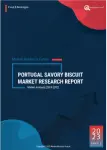MRFR Press Release/- Market Research Future published a half cooked research report on Global Textile Dyes Market.
The Textile Dyes Market was valued at USD 7.26 billion in 2023 and is expected to reach USD 12.39 billion by 2032, registering a CAGR of 6.02% from 2024-2032.
Textile Dyes Market Synopsis
The Global Textile Dyes Market, by geography, has been segmented into North America, Europe, Asia Pacific, Middle East and Africa (MEA), and South America. In the global textile dyes market, Asia Pacific is expected to witness relatively faster growth rate as compared with other regions. Within Asia Pacific, different type of textile fiber is projected to contribute the faster share growth of revenue in countries such as Japan, China and India. Furthermore, many international textile dye industry are coming up in the region adding to the growth of the sector.
China has become the major textile manufacturer due to this, textile dye production has shifted nearer to the fact of consumption which resulted 40-45% of global consumption is in China now. In addition, India is another country of the APAC region which accounted 10% of global consumption of the textile dye market. These two countries are also biggest exporters of textile dyes to the rest of the world. They also export large quantities of raw materials and intermediate chemicals for textile dye, which are used by Europe region and other developing countries. On the other hand, disperse dye is the one that has the largest production and export capacity among all textile dyes manufacturer in China.
Key Players:
Key players profiled in the global textile dyes market include Kyung-In Synthetic Corporation (South Korea), Kiri Industries Ltd. (India), Atul Ltd (India), Synthesia, a.s. (Europe), Chromatech Incorporated (US), S.A. Robama (Europe), Avocet Dye & Chemical Co. Ltd (UK), Brand & Performance Textile Specialties (Singapore), LANXESS (Europe), Huntsman International LLC (US), and Others.
At present, India adds aapprox 6% share in the global market with a 15% CAGR. The dye markets are mostly led by reactive and disperse dyes. The demand for reactive and disperse dyes is expected to grow in future as these two dyes are dominant in all the regions including APAc, North Americ, Europe, and Middle East. In the Asian region, China, Korea and Taiwan are strong players in disperse dyes, while India leads in the production of reactive dyes due to an availability of intermediate vinyl sulphone in the country. The main drivers of this region are annual disposable income, increase applications of textile products.
North America holds the second position in terms of global textile dye market due to larger consumption in textile industry, and increased demand for natural dyes including the countries US, Mexico, and Canada.
Furthermore, Europe region holds third position for textile dye market including the countries Germany, U.K., France, Spain, Italy, Nordic countries, Belgium, Netherlands, and Luxembourg due to increasing textile industry thorough different fibers such as cotton, wool, silk, nylon, viscose, and others (Acrylic, Jute etc. Textile dye market in Middle East and Africa occupies a relatively smaller pie of the global textile dye market. Within Middle East and Africa counties including UAE, South Africa and Saudi are driving the growth.
Leading companies partner with us for data-driven Insights
Kindly complete the form below to receive a free sample of this Report
Certified Global Research Member


Why Choose Market Research Future?
- Vigorous research methodologies for specific market.
- Knowledge partners across the globe
- Large network of partner consultants.
- Ever-increasing/ Escalating data base with quarterly monitoring of various markets
- Trusted by fortune 500 companies/startups/ universities/organizations
- Large database of 5000+ markets reports.
- Effective and prompt pre- and post-sales support.
Tailored for You
- Dedicated Research on any specifics segment or region.
- Focused Research on specific players in the market.
- Custom Report based only on your requirements.
- Flexibility to add or subtract any chapter in the study.
- Historic data from 2014 and forecasts outlook till 2040.
- Flexibility of providing data/insights in formats (PDF, PPT, Excel).
- Provide cross segmentation in applicable scenario/markets.







